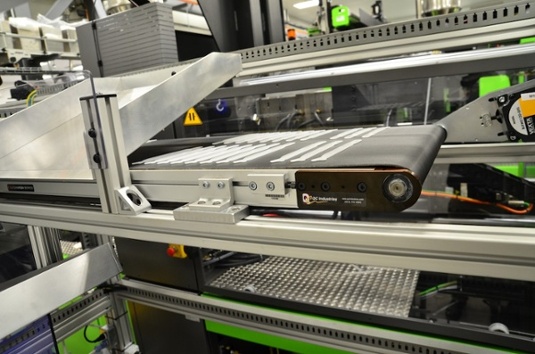
While similar to other conveyor systems, the thin design of low profile conveyors requires several special considerations when deciding on a vendor. Following these recommendations will help to ensure you choose a conveyor that is easy to maintain and withstands the rigors of your application to help maintain uptime and overall equipment effectiveness (OEE).
- Frame Construction: The frame is the backbone of any conveyor. It supports the load, of course, but most importantly it maintains the relative positioning of every other component of the conveyor. If a pulley is even slightly misaligned, for instance, it can lead to tracking issues that destroy the belt, the bearings, or both. Choose a low profile conveyor whose frame is built in a way that it can’t rack or twist over time.
- Crowned Pulleys: Crowned pulleys are slightly larger in the center than at the ends and are the recommended conveyor belt tracking method from most major belt manufacturers. They play to the belt’s natural tendency to center themselves on the longest part of the conveyor, making them the most reliable method of tracking a conveyor that won’t become damaged over time.
- Tensioning Style: Pay careful attention to the way tension on the belt is applied and released. While releasing tension may be a relatively infrequent operation in most applications, choosing a conveyor with tracking and tensioning separated makes both belt replacement and cleaning underneath the belt much simpler operations.
- Tension Marks: Proper belt tensioning is something that should never be a guessing game. Under-tensioning can lead to belt slippage, while over-tensioning leads to premature bearing failure. Conveyors with initial tension marks take the guesswork out of tensioning by clearly denoting where initial tension should be set for optimal conveyor performance.
- Maintenance Manual: In the event of conveyor downtime, the first step to getting back up and running should be a check of the troubleshooting steps in the maintenance manual. Review the maintenance manual for a conveyor before making a purchase to ensure it is comprehensive and includes basic troubleshooting steps.
Paying careful attention to these recommendations will help to ensure you purchase a dependable conveyor that maximizes your OEE.





















